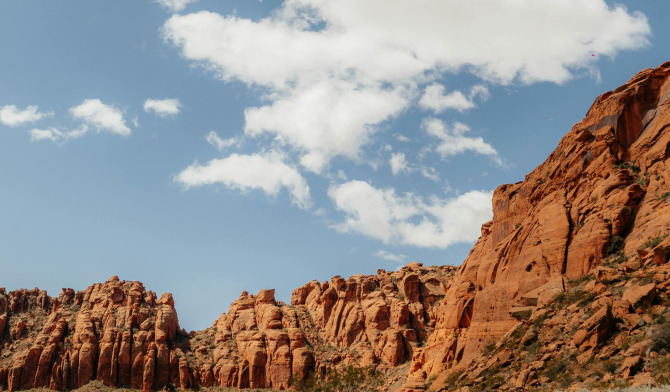Mars in the Woods
If the end of a place was today, what would remain? Pillars, an arena, a temple, ancient remains or beautiful pottery?
Crocodilia, Perissodactyla, and Artiodactyl fossils at an average of 65 million years ago remain aside roads by Dry Gulch Creek near the Duchesne, Strawberry, and Green Rivers in Utah. Nearby towns include in history one of U.S. soldiers supervising Indians, and another town started with a religious group. And 11 miles from the 4.5 million acre Uintah Indian Reservation is an ordinary road but along sandstone rock wall formations as if from Mars.
An obvious example of red rock formations can be seen in Sedona, Arizona. Further examples of red rock are common place in publications and attractions having sandstone. Near Duchesne, Utah seas or rivers used to cover red stone formations and plant life.
The Eocene period encompassing 33 to 56 million years ago put the sandstone aside an ordinary road where water used to be. This becomes an individually awe inspiring thing. Like the planet Mars on the side of the road.
And so the point- traveling down a road and then, 60 million years ago, in awareness, in the attention span, at the consciousness. To be next to those millions of years ago, to sense it, and muse about it as it stands out differently than the more taken for granted everyday Earth and its above water counterparts. Not forgetting , returning by it and knowing, there is something better than just today or a given set of things - there is life. And even on Earth, it exists in a foreign place.
References
Barton, John D. (1998). A History of Duchesne County. Utah Historical Society.
Reference for locations of places used (https://geology.utah.gov/map-pub/maps/geologic-maps).
researchgate.net was used for article: Carbon Isotope Stratigraphy of the Late Middle Eocene Duchesne River Formation in the Uinta Basin of Northeastern Utah
Search terms “Duchesne river Utah”, “Eocene”, and biology names were entered into (Bing.com).
Photo of sandstone formation got from royalty free site (Pexels.com).
Certain dating information was got from
(https://ugspub.nr.utah.gov/publications//bulletins//B-97.pdf).




